
Food is a basic requirement for every living being. We depend on plant and animals for food. Ancient men began the cultivation of food in a small area and used certain procedures for their management and improvement. This art of cultivation of the crop is called agriculture.
In agriculture, there are certain parameters to be considered such as the type of crop, properties of soil, climate etc. Depending upon these parameters, farmers decide which crop is to be cultivated at what time of the year and place. Moreover, to yield a high-quality product, suitable soil, climate and season are not sufficient. It requires a set of procedures which needed to be followed. The measures which are followed to raise crops are called agricultural practices. Different agricultural practices are discussed below.
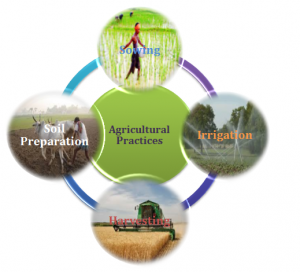
Agriculture & Agricultural Practices
Soil preparation
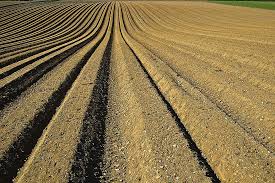
Before raising a crop, the soil in which it is to be grown is prepared by ploughing, levelling, and manuring. Ploughing is the process of loosening and digging of soil using a plough. This helps in proper aeration of the soil. After ploughing, the soil is distributed evenly and levelled in the process called levelling. The soil is then manured.
Sowing

Selection of seeds of good quality crop strains is the primary stage of sowing. After the preparation of soil, these seeds are dispersed in the field and this is called sowing. Sowing can be done manually, by hand or by using seed drilling machines. Some crops like paddy are first grown into seedlings in a small area and then transplanted to the main field.
Manuring

Crops need nutrients to grow and produce yield. Thus, the supply of nutrients at regular intervals is necessary. Manuring is the step where nutritional supplements are provided and these supplements may be natural (manure) or chemical compounds (fertilizers). Manure is the decomposition product of plant and animal wastes. Fertilizers are chemical compounds consisting of plant nutrients and are produced commercially. Apart from providing nutrients to crop, manure replenishes soil fertility as well. Other methods for soil replenishment are vermicompost, crop rotation, planting of leguminous plants.
Irrigation
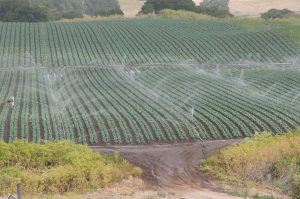
Irrigation is the supply of water. Sources of water can be wells, ponds, lakes, canals, dams etc. Over irrigation may lead to waterlogging and damage the crop. This frequency and interval between successive irrigation need to be controlled.
Weeding
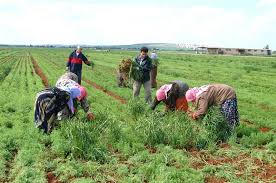
Weeds are unwanted plants which grow among crops. They are removed by using weedicides, by manually pulling them with hands and some are removed during soil preparation.
Harvesting
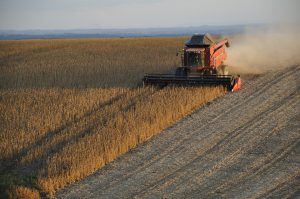
Once the crop is matured, it is cut and gathered, this process is called harvesting. Followed by harvesting, grains are separated from the chaff either by threshing, or manually in small scale (winnowing).
Storage
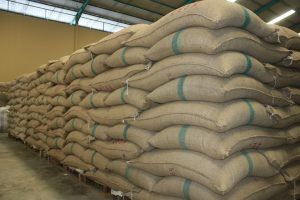
Grains yielded are stored in granaries or bins at godowns for later use or marketing. Therefore, methods of crop protection need to be better. In order to protect grains from pest and rodents- cleaning, drying, fumigation, etc., are done prior to storing.
For successful agriculture, proper methods and practices are to be followed.
To know more about agriculture and its practices download BYJU’S-The Learning app.

these are nice points
very nice answer and explanation
Thanks sir well explanation
Thank you!
These are very nice answer
I got A+ in from this points
Best way 👌 of explanation
This is a great app from which I have improved a lot a have scored full in biology because of this nice amazing notes thank u byjus
Thank you sir for a very nice explanation
Very good
Super explanation and the very good and main topic for note making
Awesome!
Thanku sir
I got 💯 in this
Very nice explanation